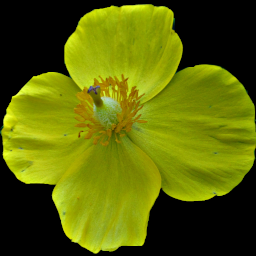

Also known as Quaker Ladies, these tiny blue flowers form tidy clumps in shaded lawns and roadsides. Small as the delightful four-petaled flowers are, they rise from a plant that seems tiny out of all proportion to the flowers. These were blooming in early May beside a country lane west of Cranberry.
Gray describes the genus and the species:
HOUSTÔNIA L. Calyx 4-lobed, persistent; the lobes in fruit distant. Corolla usually much longer than the calyx-lobes, the lobes valvate in the bud. Anthers linear or oblong. Style 1; stigmas 2. Ovary 2-celled. Pod top-shaped, globular, or didymous, thin, its summit or upper half free from and projecting beyond the tube of the calyx, loculicidal across the top. Seeds 4-20 in each cell, pitted. — Small herbs, with short entire stipules connecting the petioles or narrowed bases of the leaves, and cymose or solitary and peduncled flowers; these dimorphous, in some individuals with exserted anthers and short included style; in others the anthers included and the style long, the stigmas therefore protruding. (Named for Dr. William Houston, an English botanist, who collected in tropical America.)
Small and delicate, vernal-flowering; peduncles 1-flowered; corolla salverform; upper half of the broad and someirhat 2-lobed pod free; seeds globular, with a very deep round cavity occupyiny the inner face.
Perennial by delicate filiform creeping rootstocks or creeping stems; peduncles filiform, 2-5 cm. long.
H. caerulea L. (bluets, Innoce>xe.) Glabrous; stems erect, slender, sparingly branched from the base, 0.5-2 dm. high; lrares oblong-spatulate,6-9 mm. long; peduncle filiform, erect; corolla light blue, pale lilac or nearly white, with a yellowish eye, the straight slender long-exserted tube much longer than its lobes or than those of the calyx. — Moist and grassy places, N. S. to Ga., w. to Ont., Wise, and Ala.; producing from early spring to midsummer its delicate little flowers.







